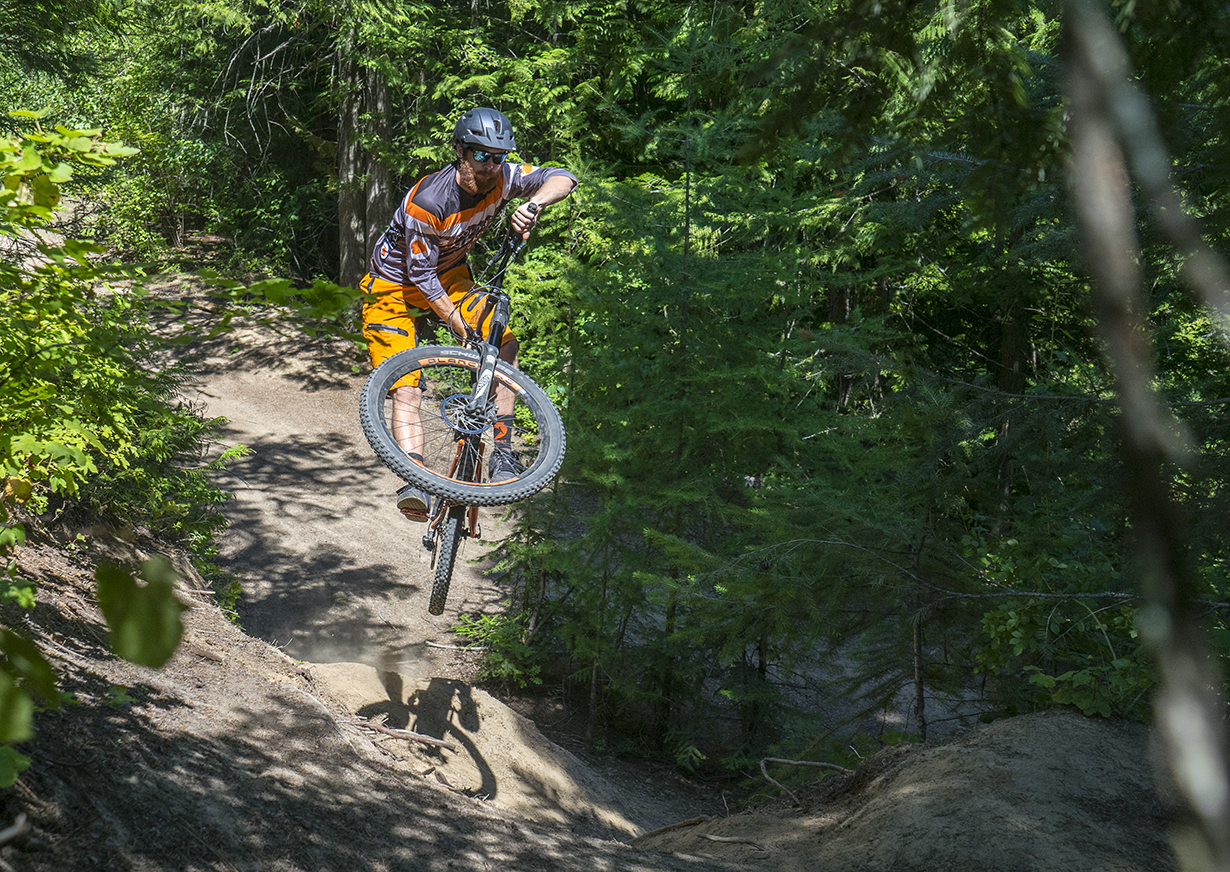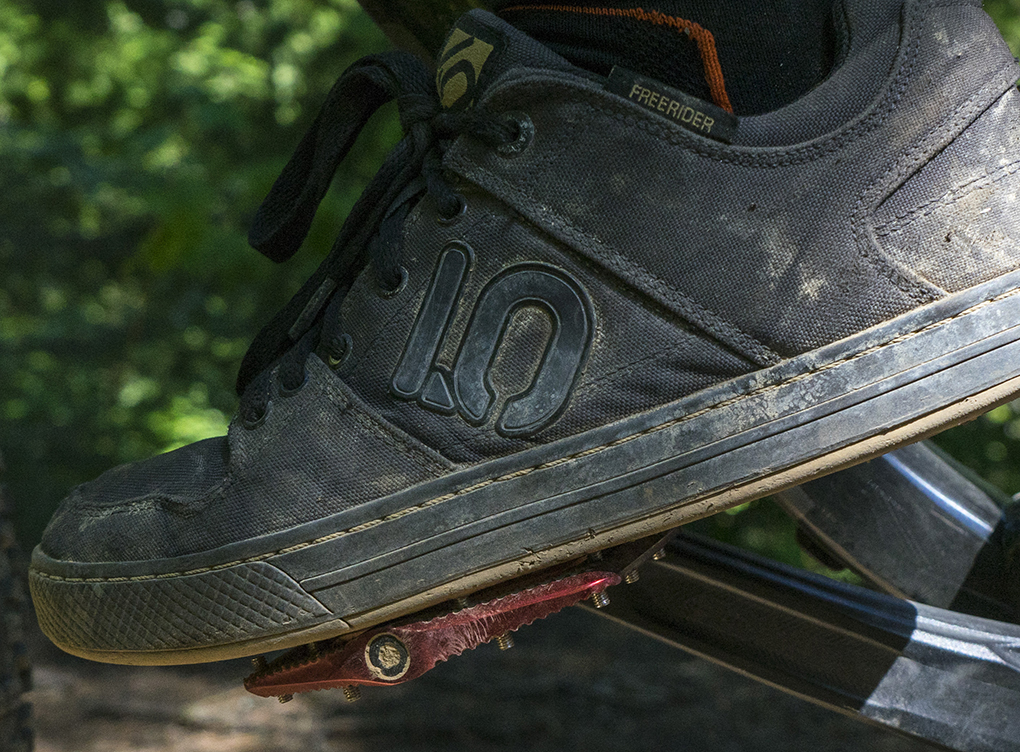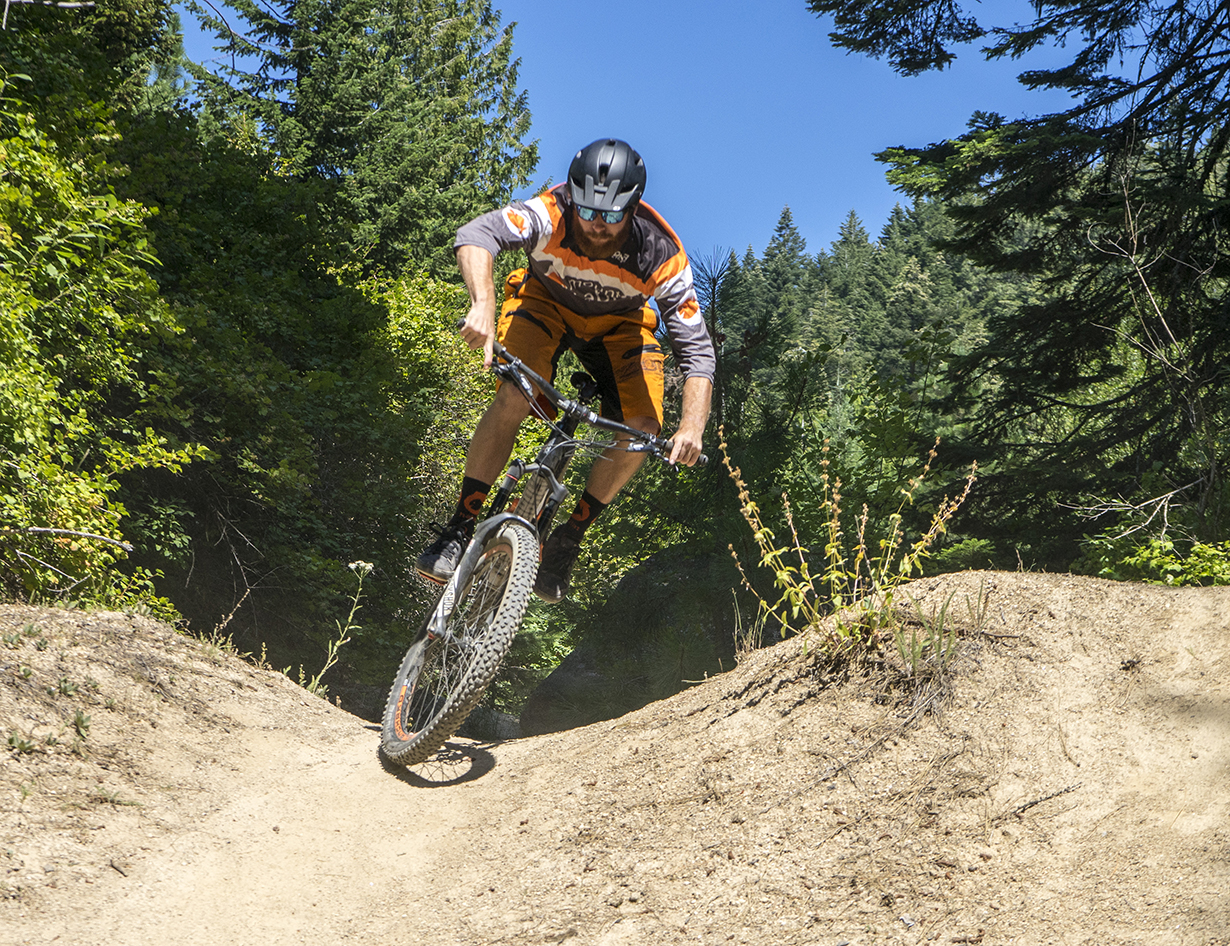
2016 Canfield Crampon Mountain Pedals
Stated Features:
- Sealed bearing/DU bushing system
- Chromoly axle
- Replaceable dual sided pins
- Patented convex shape
- Thin 6mm front impact edges
- Anodized finish, available in 10 colors
Size: 112 x 106 mm
Stated Weight: 400 grams per pair
Blister’s Measured Weight: 197 g per pedal, 394 g total
Days Tested: 5
Test Locations: Driggs & Moscow, Idaho
Intro
This morning Canfield announced their new 2016 Crampon Mountain pedal, the next evolution in their Crampon line. It has a little bigger platform, it’s just a little heavier, but the real kicker is that, according to Canfield, this is a “ZERO maintenance pedal.”
I’ve been riding on the old Crampon Ultimates for a year, and although I absolutely love them, I just had to rebuild them. While it wasn’t a terrible process, it was a little inconvenient and a little more involved than I expected. So I’ve been equal parts curious and excited about the Crampon pedal. The Crampon Mountain replaces the old Crampon Classic, and it’s Canfield’s biggest platform pedal ever, but it bears a lot of similarities to the Ultimates I’ve been on for the last year.
What’s Going on Inside?
The biggest difference between the new 2016 Crampon Mountain and the old Crampon Ultimate is what they’re spinning on.
The old Ultimate spun on DU bushings. They were user serviceable, they’re easy to tear down to re-grease, and Canfield sells rebuild kits with springs and bushings for $9.

Right before conducting this review, I had to rebuild my pedals. And while Canfield does provide a very good video that explains the process well, it’s not totally idiot proof. You need a ½ inch tap, and there’s enough potential for someone with sub-standard intelligence or coordination to mess something up, or to lose a part. For those reasons (among others) I understand Canfield’s move to use a bushing and bearing combo, especially since the old DU-bushing Ultimates had a tendency to require a rebuild a little more often than I’d like.
The new Crampon Mountains use a bushing at the axle side, with internal stacked bearings at the end. And Canfield says that’s what makes it “a ZERO maintenance pedal vs. the Ultimate that needs grease and bushings periodically with hard use.”
Of course, every pedal is going to wear out and need a rebuild at some point, but Canfield maintains that it’s going to take a very long time for the new Crampon Mountain to reach that point.
Design
Both the old Crampon Ultimate and the new Crampon Mountain use a convex design — the pedal is thinnest at the leading and trailing edges, and thickest at the spindle. That’s in contrast to many other flat pedals that utilize a concave design.
Canfield maintains that the Crampon’s convex design helps it pedal more efficiently; it works with the body to create a more natural pivot point, while also providing more pedal clearance from striking rocks.
The manufacturers of concave pedals argue that their design cups the foot better, and provides more traction between the shoe and the pedal.
Personally, I’m not much of a pedal-power fiend, so I can’t really weigh in on the “more efficient” claim. But I have spent enough time on both concave and convex pedals to have an opinion on the traction vs. clearance debate.
With grippy shoes (Five Ten Freeriders in my case) I’ve never had an issue with my feet slipping around on convex pedals, either the old Ultimates or the new Crampon Mountains. I’ve been riding on concave Spank Spoon 110’s for the last few weeks, and haven’t noticed a huge increase in traction.
However, I have noticed the impact the height of the leading edge has on pedal strikes. I’ve banged the 16mm-tall Spoons on rocks and stumps that I never noticed on the trail when I am on the 6mm-tall Crampons. That’s not to say it’s a catastrophic difference at all, but it is worth considering if you’re consistently running into clearance issues.

On the flip side, I’ve had friends argue that convex pedals might not strike as much, but they do put your foot into a more dangerous position, since it tends to conform to the shape of the pedal and droop the toes over the front. Anecdotally, the only bone I’ve ever broken was in my toe when, instead of hitting my Crampon Ultimate on the rock my foot slipped forward and over the pedal and struck it. However, I was wearing less grippy and less stiff skate shoes at that point, and I’ve never had an issue with it since, so I don’t put too much weight in that argument.
Comparisons
The Crampon Mountains cost the same amount as the old Ultimates, $149. The tradeoff is that they’re 26 grams heavier per pedal, but promise to require a lot less maintenance. They also have slightly thicker pins, which should be less prone to breaking (although I never had a problem with that on the old Crampon Ultimate.) The new Crampon is also a little bigger — 112 x 106 mm as opposed to 105 x 105 mm — but I didn’t really notice that size difference on the trail. The new Crampons also don’t have any side-to-side float when new (like the old Ultimates had) and spin a little less freely. Finally, they don’t come with a center pin installed, Canfield says this is for a more “traditional feel” however I threw the center pins in mine, and like the extra insurance they give.
The choice really comes down to what kind of rider and mechanic you are. If you want the lightest option for your bike and don’t mind rebuilding your pedals periodically, the old Ultimates are just fine. But if you want to just set and forget it and don’t mind a few grams, the new Crampon Mountains promise to require less maintenance.

Compared to the $94 Spank Spoon 100’s I’ve been riding recently (review coming soon), the new Crampon Mountain is more expensive, but weighs pretty much the same (200 g per pedal), and is a little bigger than the 100 x 104 mm Spoon. Of course, the Spoon is available in three sizes to fit different feet, so if you fall on an extreme end of the spectrum, the Spoon 90 or 110 may be a better choice for you. Ultimately, the choice here comes down to the curve of the pedal. If you really like the Crampon’s clearance, the extra cost may be worth it to you. But if you’re ok with a thicker pedal, the Spoon is a great value.
That question is relevant to most of the other concave pedals on the market, too. Personally I’m happy riding either, but the thin leading edges of the Crampon are why I’d give it a slight edge.
Durability
This really is the question on these pedals, and since I haven’t been on them long, I don’t have any real takeaways yet. But I’ll continue to ride them throughout the fall and winter and see how they fare.
Bottom Line
Canfield’s new Crampon Mountain pedal should offer a significant durability upgrade over the excellent Crampon Ultimate it replaces, and it keeps the low profile and excellent grip of its predecessor. I’m excited to put more miles on the new Crampon Mountain and see how well those zero-maintenance claims hold up.
